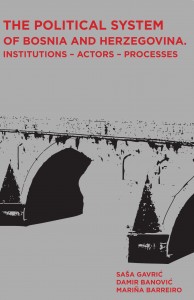INSTITUTIONS
INSTITUTIONS
Author(s): Saša Gavrić, Damir Banović, Mariña Barreiro
Subject(s): Politics, Law, Constitution, Jurisprudence, Government/Political systems
Published by: Sarajevo Open Centre
Keywords: political system; BiH; institutions; presidency; parliament; government; justice system;
Summary/Abstract: The Presidency (Predsjedništvo) of Bosnia and Herzegovina represents the collective head of the complex state. The current Presidency continues a Yugoslavian tradition, given that fact that collective presidencies were introduced at the federal level in Yugoslavia in 1971, and in Bosnia and Herzegovina in 1974. (Bieber 2008: 62; Pejanović 2005: 67). In Yugoslavia, the Bosnian-Herzegovinian presidency rotated between nine members that were elected by parliament. Direct elections were not introduced until 1990, when the Presidency was reduced to seven members: two representatives each of Serbs, Croats, and Muslims (the name given to Bosniaks until 1993) and one representative of the other ethnic groups (naroda). Today’s collective Presidency, outlined in the Dayton constitution, is therefore not an innovation of the peace negotiation under US mediation, but an institution rooted in tradition.
Book: The political system of Bosnia and Herzegovina. Institutions – actors – processes
- Page Range: 29-48
- Page Count: 20
- Publication Year: 2013
- Language: English
- Content File-PDF

